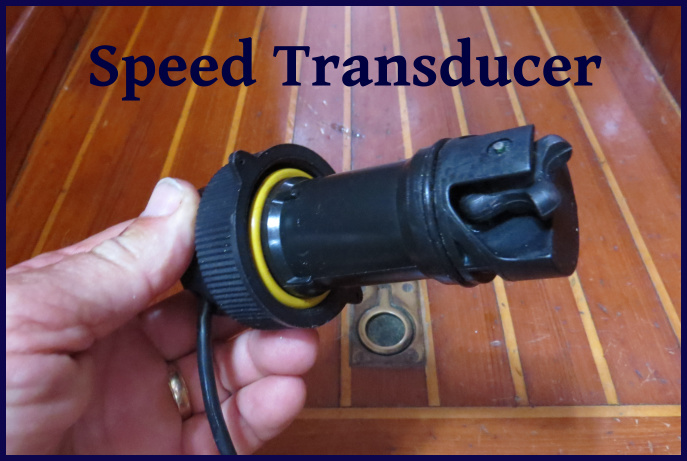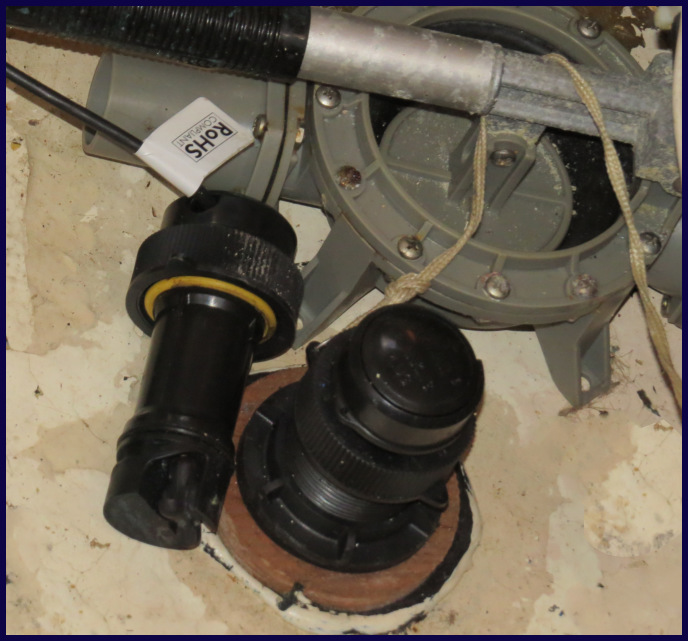The Blue View - Removing the Speed Transducer
/Like most boats, Nine of Cups has a paddle wheel type speed transducer. This little gizmo protrudes from a hole in the bottom of the boat, and as we move through the water, the paddle wheel turns. It is connected to a display in the cockpit that converts the revolutions of the paddle wheel to speed through the water, and shows the result in knots.

Not that many years ago, before GPSs were so cheap and prevalent, it was an essential piece of equipment. Now, with the multitude of GPSs aboard, it is less important, but it is still useful in determining the strength of the current. For example, as we were headed around the bottom of Madagascar on this last passage, it seemed like we were really moving along, but the GPS showed we were only doing 4 knots over the ground. The speed transducer, however, indicated we were doing 6.2 knots through the water. The difference was due to an adverse 2.2 knot current.
The paddle wheel usually works quite well as long as we keep moving. If we stop somewhere for more than a few days, however, it often gets fouled with small sea creatures, and needs to be cleaned before it will work again. Because of this, I usually pull it out and replace it with a dummy plug whenever we are going to stay in one place for awhile.
The first time I removed the transducer, I was filled with trepidation. I was about to open a rather large hole in the bottom of the boat. What if I dropped the plug and/or transducer down into the bilge? What if I couldn't force the plug or the transducer back into its hole? What if the plastic housing that holds the transducer in place broke? We were in Bristol, RI at the time, and I actually called the nearby boatyard to have them on alert with their Travelift®, just in case something went wrong. I'm sure they were quite amused by my inexperience, but they told me the slipway was all clear.
I tied small lengths of line to both the transducer and the plug so they wouldn't go far if I dropped either or both of them. I placed a tapered wooden plug and hammer nearby, just in case. Then I took a deep breath, gritted my teeth and unscrewed the transducer. Sure enough, as it popped out of its housing, there was a very impressive 2-foot geyser of water shooting from the hole. I grabbed the plug, and after a little finagling, I got it in place and screwed down tight. Most of the water went down into the bilge, and the remaining water on the floorboards was quickly cleaned up with a squeegee and sponge. Like many learning experiences on Nine of Cups, the anticipation was, thankfully, much worse than the reality. Another dragon slayed.
Since then, I have removed and replaced the transducer dozens of times. While I am certainly not totally relaxed or blasé about the process, I am not nearly as concerned about it as I was that first time. Marcie took these photos when I was inserting the transducer for our Indian Ocean passage.
BTW, a newer design of the housing includes hinged flaps that partially cover the intake side of the hole when the transducer is removed, reducing the amount of water that shoots into the boat. It seemed like a good idea, so we bought one and installed it during one of our haul-outs. It worked fine a few times, but eventually got gummed up and broke off as I pushed the plug in place.



